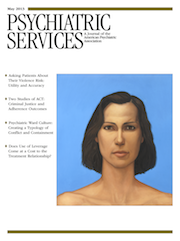The Wisdom of Psychopaths: What Saints, Spies, and Serial Killers Can Teach Us About Success
This book draws positive comparisons between the attributes of antisocial psychopaths, the serial killer profile, and the “functional psychopaths” among professions such as surgeons, high-powered executives, and politicians. The key shared characteristics between the serial killer profile and the successful professionals are ruthlessness, charm, focus, mental toughness, fearlessness, mindfulness, and action—dubbed the “Seven Deadly Wins.” The author makes the case for the evolutionary aspects of the nonviolent psychopathic profile in the modern world as an effective adaptive strategy leading to success and “getting what you want.” The author suggests that the difference between the violent and predatory psychopath and the functional psychopath is how the psychopathic characteristics are “dialed up” and in what context.
Kevin Dutton, currently a research fellow at the University of Cambridge, has written a thoughtful and entertaining book that has the attributes of a psychological travelogue through the science of the psychopathic profile that leads him to his basic premise of the positive attributes of the functional psychopath. He then tends toward the philosophical.
The first stop on the journey is a valuable exploration of the “personality hunters.” He includes a brief history of the evolution of the definition of the psychopathic diagnosis and builds the knowledge base, checking with and citing the work of several researchers, including Lilienfeld, Cleckley, Hare, and Newman, among others.
The next two stops include a brief discussion of the genetic adaptation aspects of the profile and the exploration of the relevance of game theory in establishing the pivotal role of risk taking, ruthlessness, and seeking reward at any cost. The author explores several scientific approaches to identifying aspects of psychopathic traits, including “dopamine reward circuitry,” forensic linguistics, brain functioning mapping through use of the latest brain-imaging technology, and the “warrior gene.”
The author proceeds onward by exploring the demands of the modern world as a factor in producing more psychopaths. The ensuing discussions the author shares with Pinker and Hare are illuminating in this regard and are somewhat reassuring yet also alarming, with the observation that society appears to be becoming “less violent” and “apparently more psychopathic.”
The author’s journey concludes in the somewhat philosophical sphere of a psychopathic construct of “supersanity” inclusive of shared attributes between psychopathic and spiritual traits. Dutton explores several studies that to him indicate shared attributes between psychopathy and sainthood, which this reviewer experienced as romanticism or perhaps did not understand.
The author tends toward a somewhat “pop” style of writing. Some readers may speculate about what the author and his colleagues ate or drank throughout their interviews to be off point, unnecessary, and undermining of the substantive science brought to the subject. The book tends to glide past the elephant in the room: what are the underlying differences between the violent and nonviolent psychopath in the clinical setting, and, as clinicians, how can we better differentiate between them? That said, the author has a firm and innovative grasp on the subject, and his further research may expand our understanding of the psychopathic profile in the modern world.



